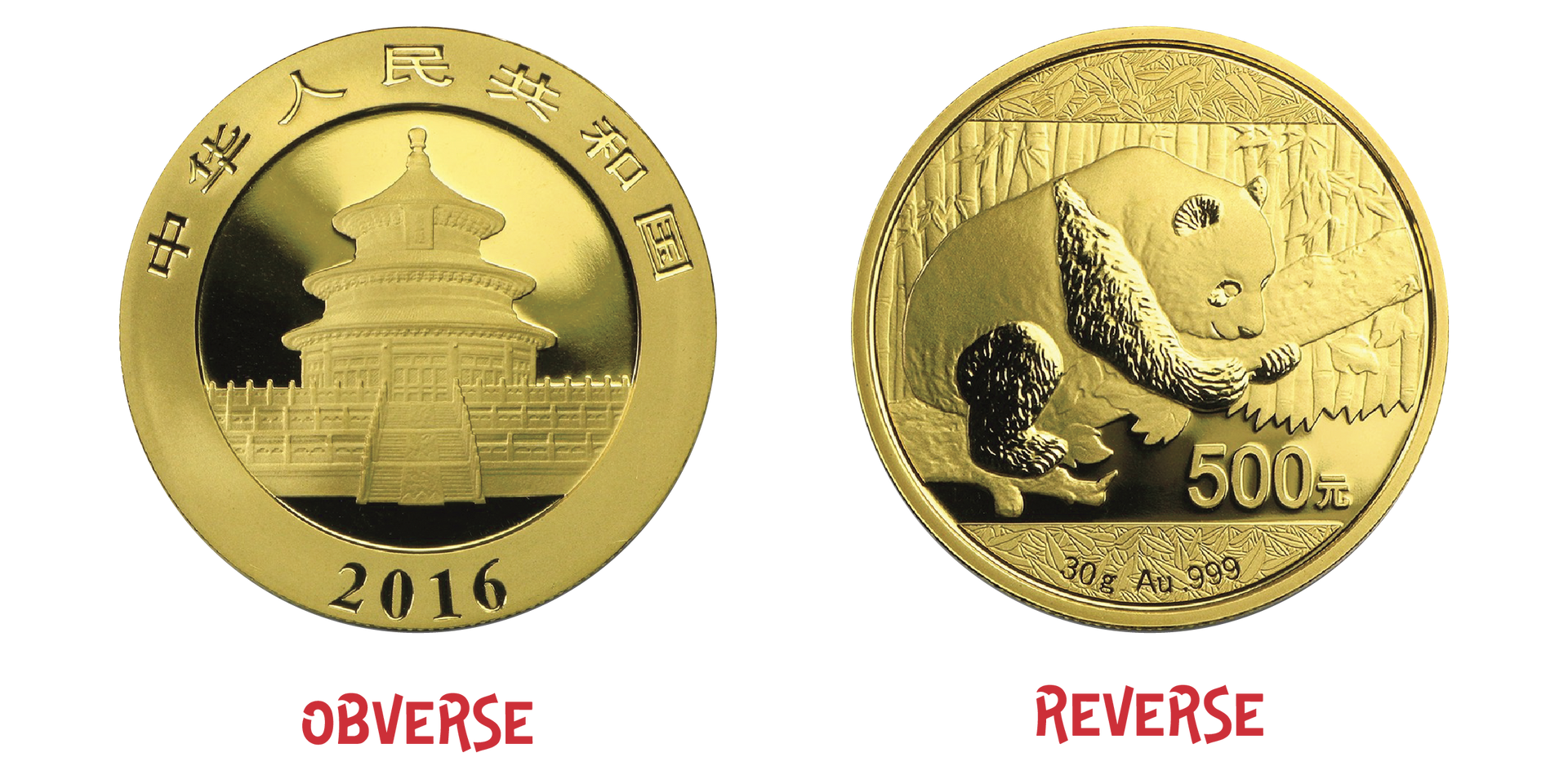You open a capsule and the Temple of Heaven flashes first—orderly, blue‑tiled, timeless. Turn the coin and a panda family steals the scene. It’s not just bullion; it’s a story told in metal, year after year.
If you collect American Eagles, you know the power of a national motif carried with pride and consistency. China’s Panda series does something brilliantly different: it anchors the obverse with the Temple of Heaven and changes the reverse every year—inviting you to build a living timeline. For mature collectors who prize stewardship and hard‑asset discipline, and for new collectors just catching the bug, the Panda’s blend of state‑backed purity, artistic rotation, and global recognition is a compelling way to diversify a U.S.‑heavy cabinet without straying from conservative principles.
Origins — from 1982 gold to today’s metric program
The story opens in 1982, when the People’s Republic of China launched the Gold Panda in .999 fine gold across multiple sizes. That first 1‑oz design—credited to Shanghai artist Chen Jian—set the tone; low initial mintages and strong demand quickly made 1982 a modern classic.
Silver arrived in 1983 as a 27‑gram, .900‑fine proof—the debut Silver Panda designed by Yu Min, later honored as Best Silver Coin of 1983. That coin is still a cornerstone for advanced sets.
Two modern inflection points matter for how the coins feel in hand:
- 2015:
Panda coins famously omit weight and fineness inscriptions—a one‑year quirk that’s an instant in‑hand tell.
- 2016: China switches from troy ounces to metric weights—the flagship gold and silver Pandas become 30 g, and fractional gold issues become 15 g / 8 g / 3 g / 1 g. It’s the start of the modern “gram ladder” most collectors build today.
Why the Panda matters in Chinese culture
Design & designers — what you’re really seeing (and who made it)
Obverse (constant): the Temple of Heaven with “中华人民共和国” (People’s Republic of China) and the year. Keeping the civic icon constant makes every reverse change feel like a new chapter without losing identity. (The Temple symbolism above is why that obverse matters.)
Reverse (changing):
one or more giant pandas
in natural settings. The rotating art is the heartbeat of the series—and it comes from named artists, which is catnip for serious numismatists:
- 1982: Gold Panda debut, reverse by Chen Jian—the start of it all.
- 1983: First Silver Panda, reverse by Yu Min—ultimately honored in numismatics for his lifetime of design work.
- 2019–2028: a planned multi‑year “life of a panda” arc—each year a vignette in a decade‑long family story.
- 2025: the seventh chapter, themed “Love’s Guidance”—designer Huang Qin depicts a mother panda with two cubs, a warm domestic scene that continues the decade narrative. (This was presented publicly in Beijing ahead of release.)
That designer lineage—Chen Jian → Yu Min → Huang Qin—gives the series a fine‑arts pedigree to match its bullion credibility.
The different coins by years — an annotated tour (1982–2025)
Rather than a dry year‑list, here’s the collector’s arc that maps the big moments:
1982 — Gold Panda debuts in multiple sizes (.999). First‑year charisma and low initial mintages have kept 1982 at the top of many want‑lists.
1983 — Silver Panda begins as 27‑gram proof (.900); the Yu Min design becomes an award‑winner and a foundational rarity.
1987 — Platinum Pandas appear (intermittently through 2005), a niche, low‑mintage chapter with survival issues due to melting.
1989 — First 1‑oz Silver Panda BU launched; for many, this is the “gateway” silver date. Palladium Panda also debuts (1 oz, 50 yuan)—short‑lived but historically important.
1990s — The variety era: Large Date / Small Date typography differences (and related diagnostics) fuel the detective work collectors love.
2000 — The
“Ring” year: Mirrored Ring vs Frosted Ring around the Temple on the obverse—two distinct, NGC‑attributed varieties everyone should learn to spot.
2001 & 2002 — The only modern design repeat; both years share the same reverse—after which the program returns to annual changes.
2003 — Frosted Bamboo vs Mirrored Bamboo varieties recognized by NGC; side‑by‑side, the background treatment jumps out.
2015 — The no‑inscription year (weight/metal/fineness absent). Keep that trivia in your pocket—great bourse‑table icebreaker.
2016 — The metric shift: 30‑gram silver & gold flagships, with 15g/8g/3g/1g fractional gold. Modern packaging and consistent diameters make albums look crisp.
2019–2028 — The family arc unfolds; lay the coins out chronologically and you’ll see a cub grow up.
2022 — 40th‑anniversary privy (“40” with a tiny panda inside the zero) appears—a visual flourish that even non‑collectors notice.
2025 — Huang Qin’s reverse shows a mother with two cubs—“Love’s Guidance”—issued across the full metric range (30 g silver & gold, 15 g, 8 g, 3 g, 1 g). Retail listings and official announcements confirm the family motif on every denomination.
(Packaging note for silver: common BU issues arrive in individual capsules, sheets of 15, and mint boxes of 450—handy to know for storage and inventory.)
The importance of the design (beyond pretty pictures)
Standing Temple of Heaven against panda is more than contrast; it’s a deliberate conversation between state, tradition, and nature. For conservative collectors who care about continuity, property rights, and heritage, that message resonates. The obverse honors ritual order; the reverse refreshes the nation’s living symbol—an animal that also underwrites a decades‑long conservation success story at home and a soft‑power tradition abroad.
Most desired / historically important Panda coins
Show & large‑format issues
Occasional 5‑oz and 12‑oz Pandas (gold & silver) and show commemoratives have tiny mintages (e.g., 1993 5‑oz gold proof listed with official mintage 99; 1991 12‑oz gold with official mintage 400). These are advanced‑collector territory.
How U.S. collectors can “read” a Panda in 10 seconds
- Temple ring (2000 only?) If you see a bright mirrored ring vs frosted ring, you’re looking at 2000—learn the difference.
- Bamboo texture (2003) Frosted vs mirrored background? You’ve got the 2003 variety pair.
- Missing specs (2015) If there’s no
weight/fineness, you just found 2015.
- Metric text (2016+) 30 g on gold or silver? You’re in the modern gram era.
- Privy “40” (2022) Tiny panda inside the zero—anniversary alert.
Common FAQs (for both new and seasoned buyers)
Are Panda coins legal tender?
Yes. They are legal tender of the People’s Republic of China, denominated in yuan; 30 g silver is 10 yuan, 30 g gold is 500 yuan, with fractional gold at 200/100/50/10 yuan. Bullion value exceeds face value.
Why did China move to grams?
To align with domestic retail preferences and simplify pricing; since 2016 the standard weight is 30 g (not 1 ozt).
Who designs the reverses?
Designers change. Notables include Chen Jian (1982), Yu Min (1983), and Huang Qin (2025).
Which mints strike the coins?
Multiple state mints—Shanghai, Shenyang, Shenzhen, and others—under the People’s Bank of China. Panda issues typically do not carry mintmarks, so specialists use typography and micro‑details instead.
What’s special about 2015?
It’s the no‑inscription year (no weight/metal/fineness on the coin).
How do I avoid counterfeits?
Buy graded (NGC/PCGS) from established dealers, weigh/measure bullion‑format pieces, and study variety diagnostics (Large vs Small Date, ring/bamboo textures). NGC documents common fakes and teaches the 2000 ring diagnostics explicitly.
Are Pandas IRA‑eligible in the U.S.?
Select 30 g gold issues are marketed as IRA‑eligible by major retailers; eligibility and custody rules depend on your custodian—confirm before purchasing for a retirement account.
How are modern silver Pandas packaged?
Typical BU silver issues are capsule‑in‑sheet (15 per) and 450‑coin mint boxes—useful for storage planning.
A quick U.S. comparison (for American‑coin diehards)
American Eagles keep a largely consistent motif (with the 2021 Type‑2 update), emphasizing continuity; Pandas deliberately change the reverse each year to encourage full‑run set‑building. If you love the hunt—filling holes, chasing keys, learning diagnostics—the Panda scratches that itch while remaining a sovereign, widely recognized bullion program.
Whether you’re a measured, long‑term investor or a new collector chasing your first “wow” piece, the Panda offers both hard‑asset comfort and artistic joy. Next Friday’s giveaway is a perfect on‑ramp—or a chance to add the 2025 family scene to your tray. Build the story one chapter at a time.
Numismatic and Historical Sources





